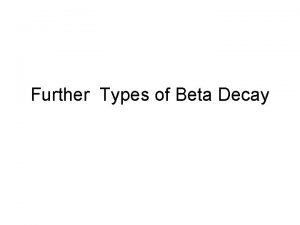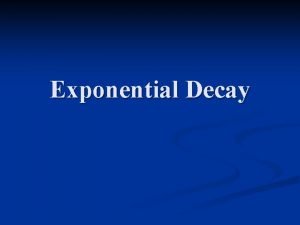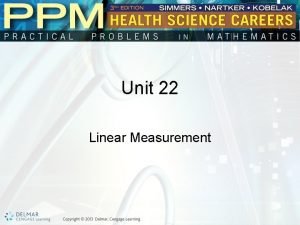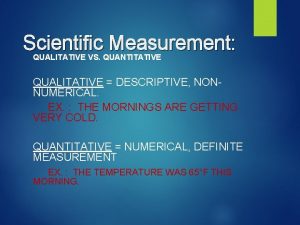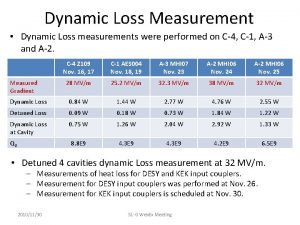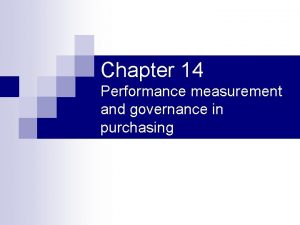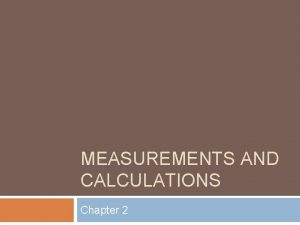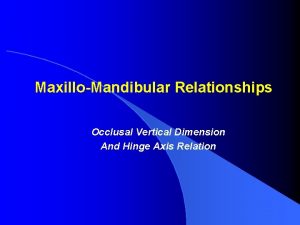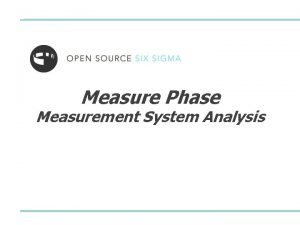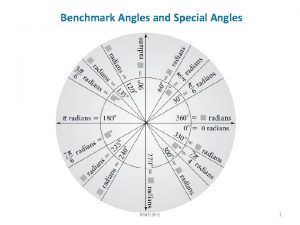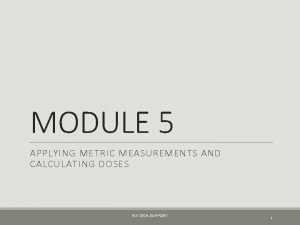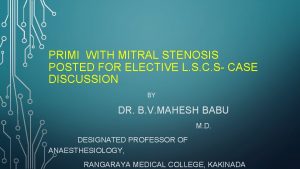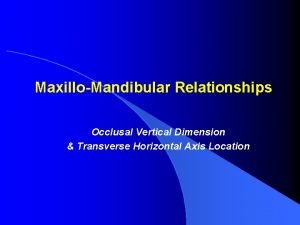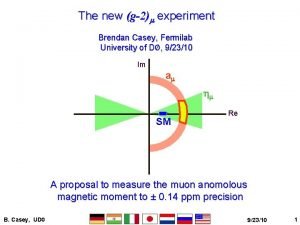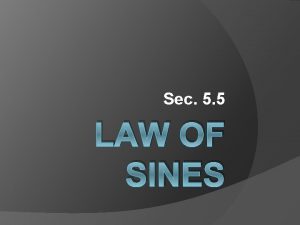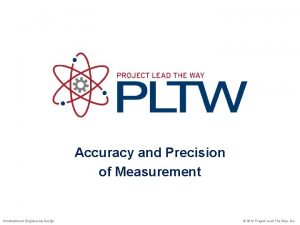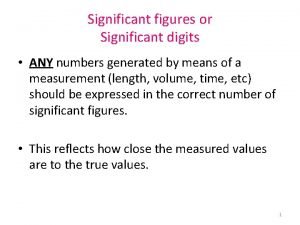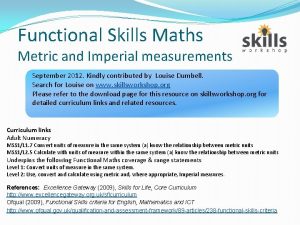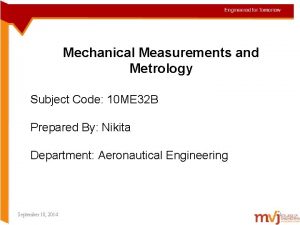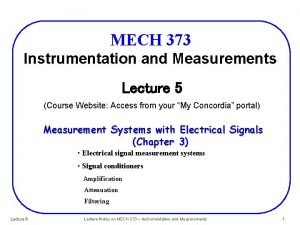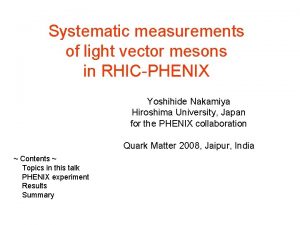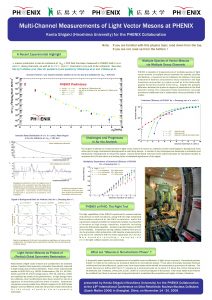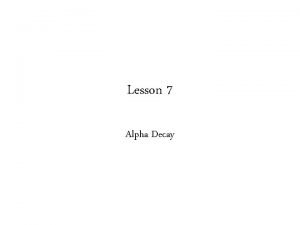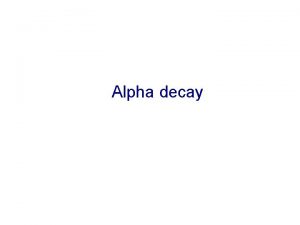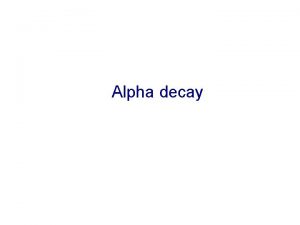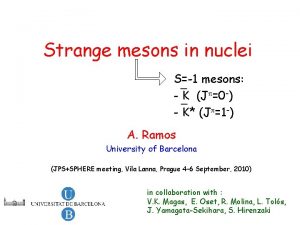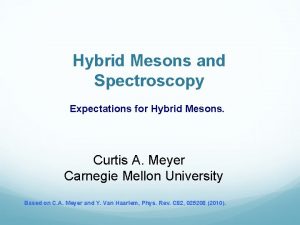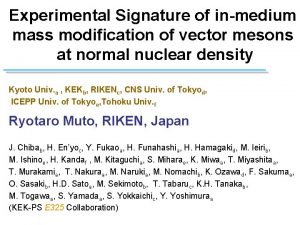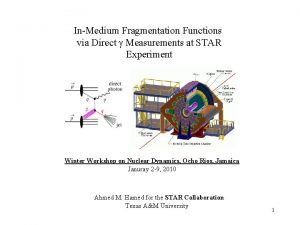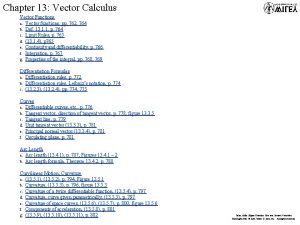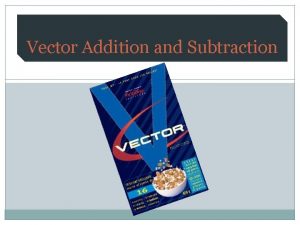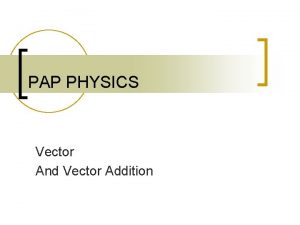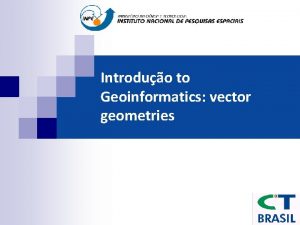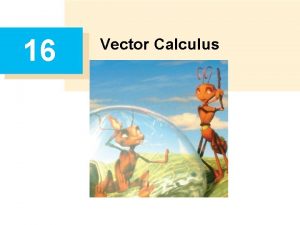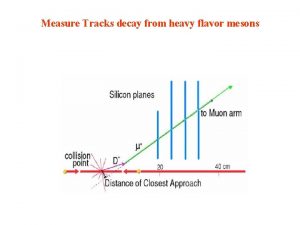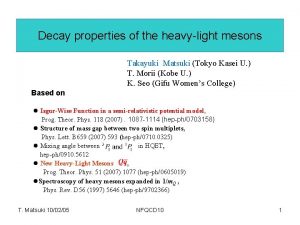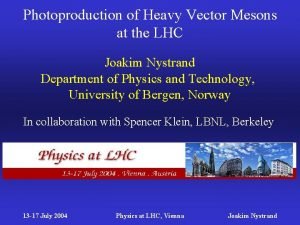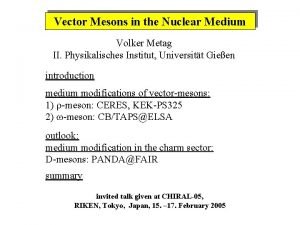Measurements of inmedium decay of vector mesons at





























- Slides: 29

Measurements of in-medium decay of vector mesons at KEK-PS Hideto En’yo RIKEN / RIKEN-BNL Research Center for The KEK-PS E 325 Collaboration Physics motivation Status Experiment f →K+K- results & w/r →e+e- results Discussion & Summary JPS/DNP Maui, Oct 2001 Hideto En'yo, RIKEN/RBRC 1

Tantalizing hints for new state of matter CERN Press Release Feb. 2000 JPS/DNP Maui, Oct 2001 Hideto En'yo, RIKEN/RBRC 2

What Theorists Say ? • <qq> quark condensate : order parameter • to indicate how much the symmetry broken • but not an observable → Mass of Vector Meson, r w f Mv = 2 x Mqeff + small interaction term JPS/DNP Maui, Oct 2001 Hideto En'yo, RIKEN/RBRC 3

Bound Nucleons, Mesons • Imagine that a neutron ( or proton ) in Oxygen nuclei made GUT decay in Kamiokande. (assume that you have a perfect detector ) n → π+ + e Mn 2 → ( Eπ + Ee)2 -(Pπ + Pe)2 Mn = 939. 6 Me. V , Mn = 938. 3 Me. V ? ? ? • More precisely 16 O → π+ + e- + 2 15 O* (Mn +M 15 O ) 2 → (E 15 O + Eπ + Ee )2 - (P 15 o + Pπ + Pe )2 2 +P 2 =M E You measure 16 O levels JPS/DNP Maui, Oct 2001 Hideto En'yo, RIKEN/RBRC 4

Moving Mesons in Media 2 Outside 2 +P 2 M E= be small Inside • In-media meson modification – Observed Mass is not Lorentz Invariant • shift of resonance position • resonance broadening/narrowing → DISPERSION JPS/DNP Maui, Oct 2001 Hideto En'yo, RIKEN/RBRC 5

Experiments CLUES Experiment CERES/HELIOS-3 KEK-TANASHI ES GSI Measurements r modification p modification Interests Temp. dep. ρis modified in Hot Matter Density dep. ρis modified in He Density dep. πis modified in He Present & future experiments. RHIC(running)/LHC(2006) KEK-PS: p+A→f+X(f→K+K-/e+e-) (Running) SPring-8: g + →f+A*(f→ K+K-) (Ready to run ) GSI: d +A→ 3 He+A* (hw bound states) (Ready to run ) GSI-HADES: p +A→ w+A* (w→e+e-) (Preparation, 2001? ) JPS/DNP Maui, Oct 2001 Hideto En'yo, RIKEN/RBRC 6

KEK-PS E 325 to measure ρωφ decays in nuclear matter KK Threshold in Free Space f modification ? K modification ? Shape modification can be measured in ω/ρ/φ → e+e. JPS/DNP Maui, Oct 2001 f(G=4. 4 Me. V) DQ=38 Me. V φ →K+K- /φ →e+e. Hideto En'yo, RIKEN/RBRC 7

Some Tips of E 325 • 109/sec primary protons on thin (0. 1%) nuclear target to suppress g conversions. • Focus on slowly moving f, w, r 's, p =~1 Ge. V/c(lab). About 10% of f's will decay inside a nucleus if nothing happens. • Expected mass shift is 20~40 Me. V for φ ~ 140 Me. V for ρ、ω – ( Hatsuda-Lee). • Secondary peak may enhance when low b f's are selected. • The ratio (f→K+K-)/(f→e+e-) is sensitive to modification of phi and/or K • natural width of f, w is narrow (4. 4, 8. 4 Me. V), but some broadening can happen. . Estimations are: - Gf = sf. N bfr 0 Gf <20 Me. V - s{f. N} < $10 mb, total cross section (from g+A→f ) bf=0. 7, r 0 =0. 16/fm 3 - f →K+*K-*(K-N→SX) - Klingle and Weise JPS/DNP Maui, Oct 2001 Gf ~44 Me. V (at rest) Hideto En'yo, RIKEN/RBRC 8

Analysis Brief Mile Stones and Status • • • KK ee • • 1994 March. KEK-PS PAC conditionally approved 1995 March. KEK-PS PAC approved 1996 July. Construction started 1996 November. Engineering Run (40. 5 shift of beam test) 1997 June, First Physics Run with K+K-. 17 days 50 shifts – Data accumulation mainly with K+K- channel trigger – Beam Intensity 1~2 x 108$ protons/spill on 0. 6% interaction targets (106 interaction/spill) • 1998 March. Completion of Spectrometer, • 1998 April –May. Production Running of 29 days 74 shifts. – Parallel Trigger. K+K-/ e+e– Beam Intensity 1~2 x 109 protons/spill on 0. 1% interaction target (106$ interaction/spill) • 1999 June 57 shifts Data Taking performed – Parallel Trigger. K+K-/ e+e– Beam Intensity 1~2 x 109 protons/spill on 0. 2% interaction target (106$ interaction/spill) • 2000 Jun, 35 shifts • 2000 Dec, 35 shifts • 2001 Nov-Dec 104 shifts! JPS/DNP Maui, Oct 2001 Hideto En'yo, RIKEN/RBRC 9

E 325 collaboration • Kyoto University H. Funahashi, , M. Kitaguchi, M. Miyabe, T. Murakami, R. Muto, M. Naruki, F. Sakuma, H. D. Sato, S. Yamada • CNS, University of Tokyo – H. Hamagaki, K. Ozawa • ICEPP, U-Tokyo – S. Mihara, M. Ishino • RIKEN – S. Yokkaichi, T. Tabaru, H. Enyo • Tohoku University – H. Kanda • KEK – J. Chiba, M. Ieiri, O. Sasaki, M. Sekimoto, K. Tanaka • Osaka University – M. Nomachi JPS/DNP Maui, Oct 2001 Graduation T. Miyashita Y. Yoshimura K. Hamada Hideto En'yo, RIKEN/RBRC 10

E 325 SETUP JPS/DNP Maui, Oct 2001 Hideto En'yo, RIKEN/RBRC 11

JPS/DNP Maui, Oct 2001 Hideto En'yo, RIKEN/RBRC 12

Around the targets • 3 target plate inline – C/CH 2/Cu – 109/s protons, – 106/s interactios • Vertex chamber – 1. 75 mm drift length JPS/DNP Maui, Oct 2001 Hideto En'yo, RIKEN/RBRC 13

Spectrometer Performance (Invariant Mass Spectrum) L→pp. K 0→p-p+ ML= 1115. 4 -5 Me. V/c 2 (PDG 1115. 7 Me. V/c 2) d. ML = 1. 8 -2. 4 Me. V/c 2 (Sim 1. 9 Me. V) MK= 494. 8 Me. V/c 2 (PDG 497. 7 Me. V/c 2) d. Mk = 6. 1 Me. V/c 2 (Sim 6. 3 Me. V ) φ→KK 2.4 Me. V φ→ee 9 Me. V JPS/DNP Maui, Oct 2001 Hideto En'yo, RIKEN/RBRC 14

PRL, the issue of 28 May, page 5019 ‘ 98 data (Electron Channel) w e +e- • ω→e+e- Significant Difference between C and Cu • The first observation of in-medium decay of vector mesons. JPS/DNP Maui, Oct 2001 Hideto En'yo, RIKEN/RBRC 15

Combinatorial background K 0 s Major background souces are • π0→γγ (γ→ee) • π0→ eeγ • π+ π- invariant mass is well described with the mixed events. • π+ π- Correlation is only significant for K 0 s Spectrum of p pair JPS/DNP Maui, Oct 2001 It is reasonable to use ee mixed event for the combinatorial background Hideto En'yo, RIKEN/RBRC 16

• 450 Ge. V p+Be→e+e- Helios/Na 34 JPS/DNP Maui, Oct 2001 Hideto En'yo, RIKEN/RBRC 17

’ 99+’ 98 data (Electron Channel) i lim e r P y r na Statistics improved by factor 5. Consistently the excess was seen. JPS/DNP Maui, Oct 2001 Hideto En'yo, RIKEN/RBRC 18

JPS/DNP Maui, Oct 2001 Hideto En'yo, RIKEN/RBRC 19

‘ 99 data (KK mode) JPS/DNP Maui, Oct 2001 to be published Hideto En'yo, RIKEN/RBRC 20

JAM (Y. Nara, RBRC) Intra Nuclear Cascade Code Pt βγ Y Y-Pt Resonance Production ( Low Energy) String Excitation (Mid Energy) Parton-parton (High Energy) K+K- Sources 1. φ JAM 2. a 0/f 0 All come from string decays 3. Non resonant (not large) Experiment 4. PID back ground C, CH 2 data (χ2 = 34. 5/37) a 0/f 0 to φ 37.7± 10 % Gd, Cu data (χ2 = 38. 8/37) a 0/f 0 to φ 27. 2± 10.1% JPS/DNP Maui, Oct 2001 Kinematical Distributions are well Described by JAM Hideto En'yo, RIKEN/RBRC 21

Target Mass Dependence Good consistency between φ→KK and φ→KK af =1. 01 0. 09 EXP(KK) af =1. 09 0. 24 EXP(ee) af =1. 157 0. 003 JAM a is surprisingly large but explained by JAM. Reasonable agreement in the absolute scale. aw =0. 85 0. 09 EXP(ee) aw =0. 787 0. 001 JAM a is smaller than φ both in the data and JAM, The absolute scale is factor 5 different. JPS/DNP Maui, Oct 2001 Hideto En'yo, RIKEN/RBRC 22

Origine of Large α observed in φ production s(f)/s(w) ee KK JAM • αf seems to be larger than αw • Same tendency also in JAM. • Most of φ production is from secondary interactions (JAM). JPS/DNP Maui, Oct 2001 Hideto En'yo, RIKEN/RBRC 23

What we have learned ? • Meson modification is observed in nucleus firstly in electron pair channel. • Does it means QCD chiral symmetry restoration ? Toy Model Calc. – NOT YET ( life is more complicated) – mass shift as predicted by Hatsuda – in-media broadening of 3 × free space ( D. Cabera et al. ) – production of ρ・ω at the surface of a nucleus (A 2/3) JPS/DNP Maui, Oct 2001 Hideto En'yo, RIKEN/RBRC 24

What is missing then ? • Theoretically – How large the in-media broadening ? • SHAPE • DECAY RATE Many theoretical works, not conversing – Other trivial reasons ? • Collisional broadening • Phase space (not important in E 325) • Experimentally – Statistics, to give • Accurate shape • Dispersion – φ→e+e- By Akaishi, Yamazaki JPS/DNP Maui, Oct 2001 Hideto En'yo, RIKEN/RBRC 25

Conclusions l The ’ 97+’ 99 f→K+K- data have been analyzed. The results shows Ø No significant mass shape deformation (a 0/f 0 are problematic) Ø Strong A dependence (a =1. 01 +- 0. 09 ) in the production Ø Reasonable agreement with the cascade model JAM. l The ‘ 98 ω→e+e- spectrum shows a surprising indication of inmedium decay of ρ/ω mesons Ø The first observation of mesons decayed in nuclear matter. Ø The physics underneath is not apparent yet, but very promising to go further. l The ‘ 99 e+e- data are still preliminary, but comfirming the exess seen in ’ 98 data with also a clear peak of φ →e+eØ A dependence of φ is smaller than ω productions, seemingly due to the secondary collision according to the JAM calculation. Ø The measured production cross section of ω is consistent with the previouse measurement. JAM calculation predict 5 times larger. KEY is to obtain the φ →e+e- spectrum with improved statistics, which will be available 2000/2001 data analysis. JPS/DNP Maui, Oct 2001 Hideto En'yo, RIKEN/RBRC 26

Electron efficiency and pion contamination • We evaluated the electron efficiency and pion contamination in the momentum range greater than 400 Me. V/c. EM cal Energy. vs. Momentum n n The remaining ep pair background was estimated to be about 13% in the final e+e- pair sample. The contaminations like pp pair to be negligibly small. JPS/DNP Maui, Oct 2001 Hideto En'yo, RIKEN/RBRC 27

Kinematical distribution of electron pair • The kinematical coverage of the present data is shown. • The combinatorial background is subtracted. Opening angle Transverse Momentum bglab Rapidity Light Target JPS/DNP Maui, Oct 2001 Opening angle bglab Transverse Momentum Rapidity Heavy Target Hideto En'yo, RIKEN/RBRC 28

Meson production in JAM JPS/DNP Maui, Oct 2001 Hideto En'yo, RIKEN/RBRC 29
 Beta minus decay vs beta plus decay
Beta minus decay vs beta plus decay What is decay factor
What is decay factor Define the term position vector
Define the term position vector Unit vector
Unit vector Ay cosa
Ay cosa Resolution of vectors
Resolution of vectors Units of linear measurement
Units of linear measurement Qualitative vs quantitative science
Qualitative vs quantitative science Dynamic loss
Dynamic loss Purchasing goals measurements
Purchasing goals measurements Standard deviation of repeated measurements
Standard deviation of repeated measurements Degree of malnutrition formula
Degree of malnutrition formula Percent error example
Percent error example Resting vertical dimension
Resting vertical dimension Measure phase steps
Measure phase steps Benchmark angle measurements
Benchmark angle measurements Clark's rule formula
Clark's rule formula Wilkins score
Wilkins score Transverse horizontal axis
Transverse horizontal axis Measurements of money
Measurements of money Brendan casey fermilab
Brendan casey fermilab State whether the given measurements determine zero
State whether the given measurements determine zero Accuracy in measurement
Accuracy in measurement Pvc pipes wikipedia
Pvc pipes wikipedia Chapter 2 measurements and calculations
Chapter 2 measurements and calculations Significant figures rules
Significant figures rules Imperial measurements
Imperial measurements Anthropometric measurement includes vital signs
Anthropometric measurement includes vital signs Metrology and measurements subject code
Metrology and measurements subject code Instrumentation and measurements
Instrumentation and measurements
